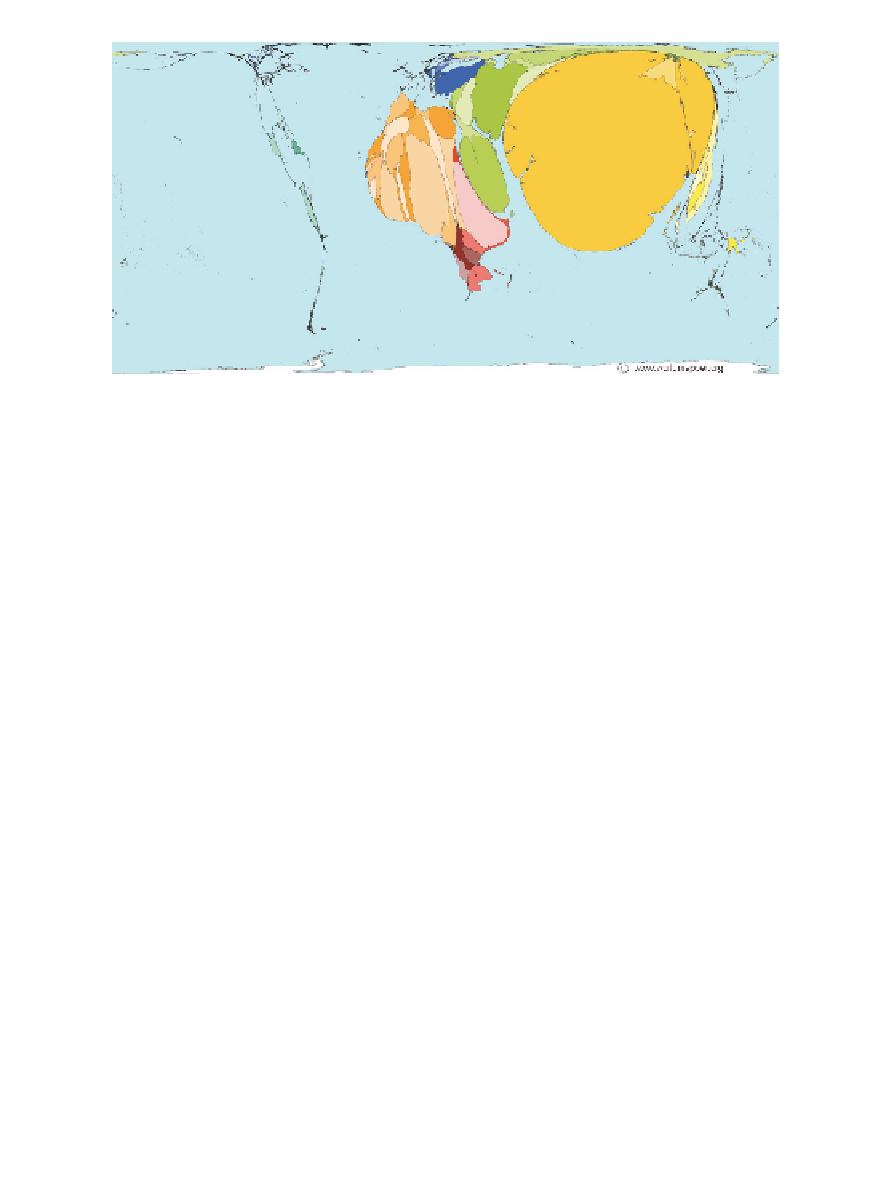Geography Reference
In-Depth Information
Figure 1.4.3
Girls not attending primary school (size of country shows the
proportion of the total world female population not attending primary school
in that country).
Source
: Worldmapper map number 201 © Copyright SASI Group (University of Sheffield)
twentieth anniversary edition of the UNDP
Human Development
Report
published in October 2010. The MPI assesses a range of critical
factors, each held to be associated with the incidence of critical forms
of deprivation at the household level, as listed in Table 1.4.2. Like the
HDI and HPI, the starting point for the MPI is the three key dimen-
sions of education, health and standard of living (Table 1.4.2). The
dimension of education is reflected by the two indicators of years of
schooling and school enrolment. Secondly, the health dimension is
measured by nutrition and child mortality. Thirdly, standard of living
is summarized by a range of factors, rather than income alone. These
include the presence of electricity, adequate sanitation, drinking
water, flooring material, cooking fuel and the ownership of assets
(Table 1.4.2). The MPI promises not only to reflect more factors in
assessing poverty, but it will also measure conditions right down to
the material conditions that people face on a daily basis. The data can,
of course, subsequently be aggregated up to the regional and national
levels from the household data. The approach has already been
employed at the national scale in the case of Mexico, for example, and
promises to render a finer-grained multidimensional assessment of
poverty.
50














